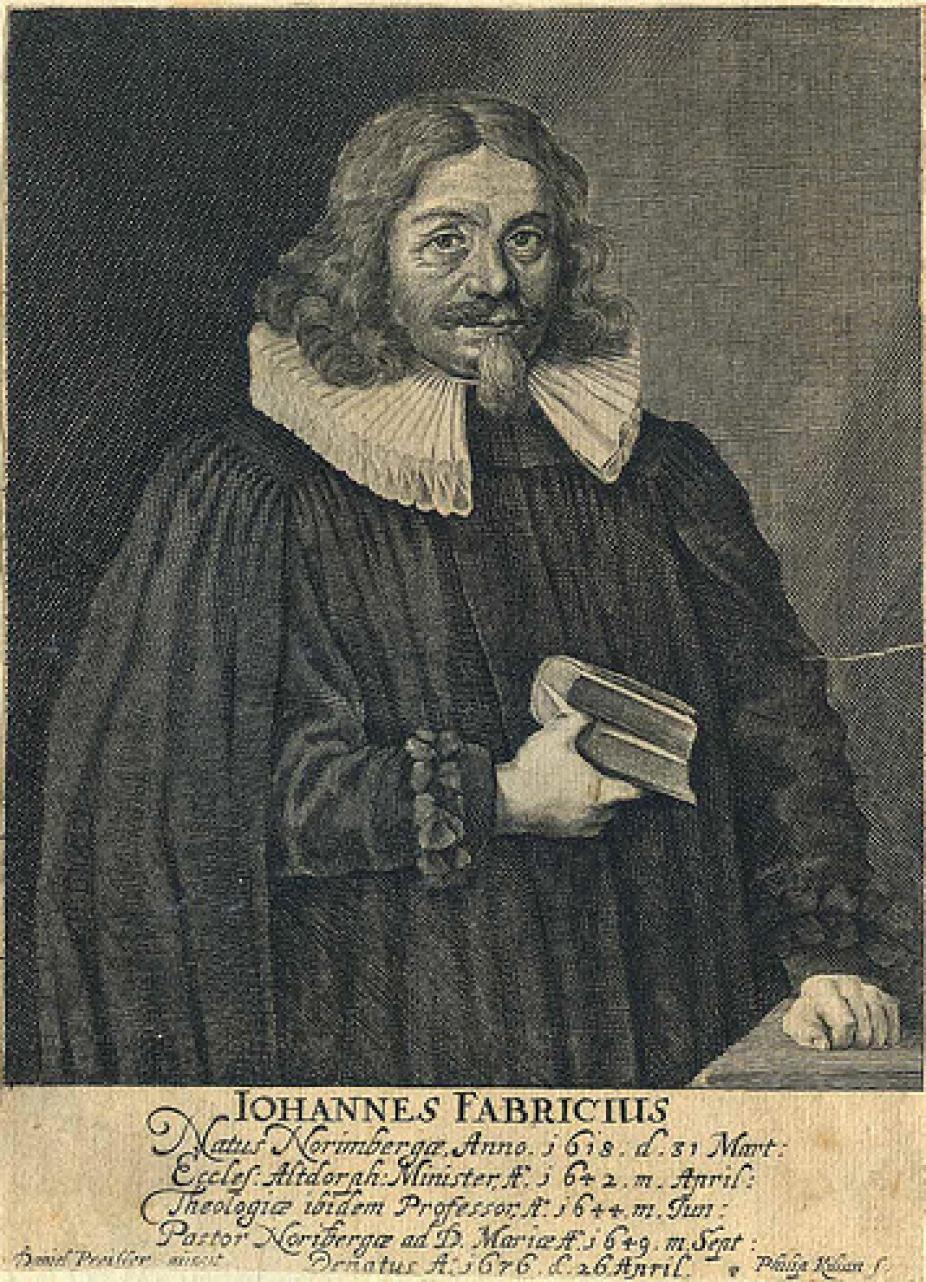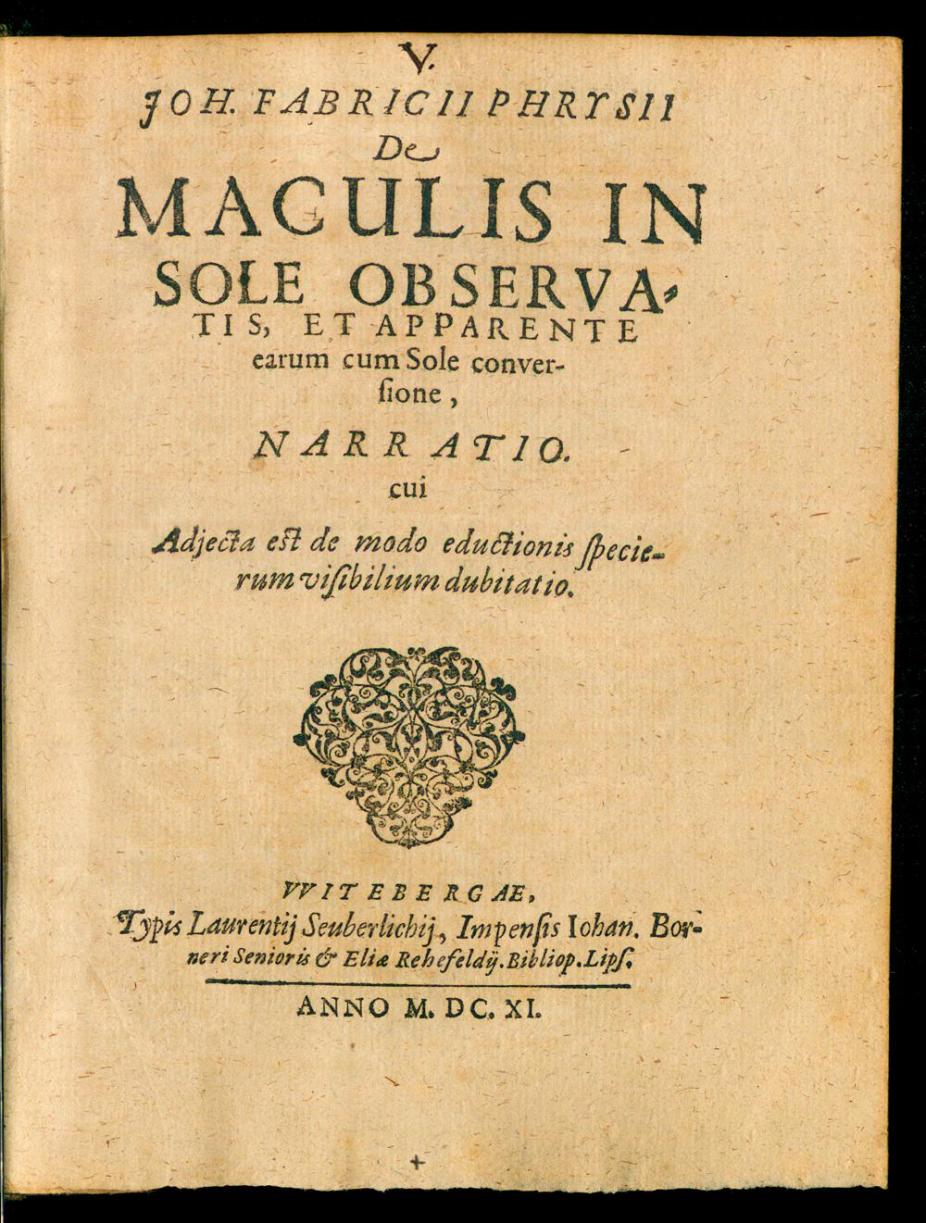Johannes Fabricius (1587–1616)

Pen etching of Johannes Fabricius.
Encyclopedian Dictionary (encyclopedian.blogspot.com/2012/05/johannes-fabricius.html)
Johannes Fabricius was born on January 8, 1587 at Resterhave, in East Frisia (Northwestern Germany). He studied medicine first at Helmstedt, then Wittenberg, then at Leyden where he first engaged in telescopic observations.
Johannes' father was David Fabricius, a Lutheran pastor, astrologer, and able astronomer who discovered the variability of the star Mira Ceti. Johannes' interest in the sun persisted and on February 27, 1611 he first saw sunspots (March 9 on the Gregorian calendar, not yet adopted in East Frisia), and later teamed up with his father for further observations. The Fabricius team correctly interpreted the day-to-day motion of sunspots as an indication of the Sun's axial rotation, and the young Fabricius completed a short account of their observations and interpretation that same year, which was published in June 1611 under the title "de Maculis in Sole observatis et apparente earum cum Soleconversione, Narratio" (Account of Spots Observed on the Sun and of Their Apparent Rotation With the Sun).
Like Thomas Harriot, the Fabricius son-father team first observed sunspots directly through their telescope shortly after sunrise or before sunset. Their harrowing account of their observations is worth quoting (excerpt from the translation in the paper by Mitchell cited):
"... Having adjusted the telescope, we allowed the sun's rays to enter it, at first from the edge only, gradually approaching the center, until our eyes were accustomed to the force of the rays and we could observe the whole body of the sun. We then saw more distinctly and surely the things I have described [sunspots]. Meanwhile clouds interfered, and also the sun hastening to the meridian destroyed our hopes of longer observations; for indeed it was to be feared that an indiscreet examination of a lower sun would cause great injury to the eyes, for even the weaker rays of the setting or rising sun often inflame the eye with a strange redness, which may last for two days, not without affecting the appearance of objects."

Title page of the small pamphlet published in 1611 by Johann Goldsmid, better known by his latinized name Fabricius.
Soon after this, they adopted Kepler's eye saving "camera obscura technique,", where an image of the Sun is formed through a pinhole opening in a darkened room and observed in projection.
Contemporaries such as Johannes Kepler, Simon Marius, and Maestlin were aware of the Fabricius' early sunspot work, and Kepler in particular repeatedly refers to it in various of his writings. However, the controversy between Galileo Galilei and Christoph Scheiner over who first discovered sunspots took center stage and the contribution of the Fabricius team was all but forgotten until a hundred years later, when a copy of Fabricius' small pamphlet was rediscovered and publicized in 1723.
Johann Fabricius died on March 19, 1616, and his father, who did not pursue sunspot observations, was killed the following year by an enraged churchgoer he had verbally attacked from the pulpit over a stolen goose.
Bibliography
Mitchell, W.M. 1916, The history of the discovery of solar spots, in Popular Astronomy, 24, 22-ff.
Christianson, J.R. 2000, On Tycho's Island,(Cambridge: Cambridge University Press).